Trichlorosilane
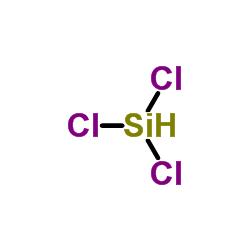
Trichlorosilane structure
|
Common Name | Trichlorosilane | ||
|---|---|---|---|---|
| CAS Number | 10025-78-2 | Molecular Weight | 135.452 | |
| Density | 1.342 g/mL at 25 °C(lit.) | Boiling Point | 31.8±9.0 °C at 760 mmHg | |
| Molecular Formula | Cl3HSi | Melting Point | -127 °C | |
| MSDS | Chinese USA | Flash Point | 7 °F | |
| Symbol |



GHS02, GHS05, GHS07 |
Signal Word | Danger | |
| Name | Trichlorosilane |
|---|---|
| Synonym | More Synonyms |
| Density | 1.342 g/mL at 25 °C(lit.) |
|---|---|
| Boiling Point | 31.8±9.0 °C at 760 mmHg |
| Melting Point | -127 °C |
| Molecular Formula | Cl3HSi |
| Molecular Weight | 135.452 |
| Flash Point | 7 °F |
| Exact Mass | 133.891312 |
| LogP | 4.77 |
| Vapour density | 1 (vs air) |
| Vapour Pressure | 595.7±0.1 mmHg at 25°C |
| Index of Refraction | 1.4-1.402 |
| Stability | Stable, but extremely flammable. Pyrophoric - spontaneously ignites in air. Explosion hazard in air - note wide explosion limits. Reacts violently with water. Incompatible with moisture, acids, bases, strong oxidizing agents, alcohols, amines. |
| Water Solubility | decomposes |
CHEMICAL IDENTIFICATION
HEALTH HAZARD DATAACUTE TOXICITY DATA
|
| Symbol |



GHS02, GHS05, GHS07 |
|---|---|
| Signal Word | Danger |
| Hazard Statements | H224-H250-H302 + H332-H314 |
| Supplemental HS | Contact with water liberates toxic gas., Reacts violently with water. |
| Precautionary Statements | P210-P280-P303 + P361 + P353-P305 + P351 + P338-P370 + P378-P422 |
| Personal Protective Equipment | Faceshields;full-face respirator (US);Gloves;Goggles;multi-purpose combination respirator cartridge (US) |
| Hazard Codes | F+:Highlyflammable;C:Corrosive; |
| Risk Phrases | R12;R14;R17;R20/22;R29;R35 |
| Safety Phrases | S16-S26-S36/37/39-S43-S45-S7/9-S43A |
| RIDADR | UN 1295 4.3/PG 1 |
| WGK Germany | 1 |
| RTECS | VV5950000 |
| Packaging Group | I |
| Hazard Class | 4.3 |
| Precursor 10 | |
|---|---|
| DownStream 10 | |
|
Fabrication of Self-Cleaning, Reusable Titania Templates for Nanometer and Micrometer Scale Protein Patterning.
ACS Nano 9 , 6262-70, (2015) The photocatalytic self-cleaning characteristics of titania facilitate the fabrication of reuseable templates for protein nanopatterning. Titania nanostructures were fabricated over square centimeter ... |
|
|
On chip analysis of CNS lymphoma in cerebrospinal fluid.
Theranostics 5 , 796-804, (2015) Molecular profiling of central nervous system lymphomas in cerebrospinal fluid (CSF) samples can be challenging due to the paucicellular and limited nature of the samples. Presented herein is a microf... |
|
|
Microprocessor-based integration of microfluidic control for the implementation of automated sensor monitoring and multithreaded optimization algorithms.
Biomed. Microdevices 17 , 82, (2015) Microfluidic applications range from combinatorial synthesis to high throughput screening, with platforms integrating analog perfusion components, digitally controlled micro-valves and a range of sens... |
| trichlorohydrosilane |
| Trichlorosilane |
| UNII-QZY2645L6V |
| Silicochloroform |
| Silane,trichloro |
| trichlorosilyl hydride |
| tri-chlorosilane |
| silici-chloroforme |
| silanea-19 |
| EINECS 233-042-5 |
| siliciumchloroform |
| silane, trichloro |
| MFCD00011518 |
| Silane, trichloro- |
| trichlorsilan |
| triclorosilano |
| trichloro-silan |
| trichloorsilaan |
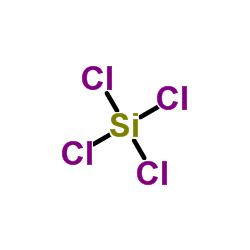 CAS#:10026-04-7
CAS#:10026-04-7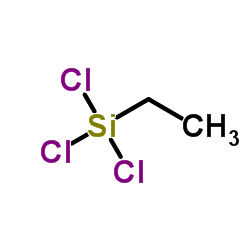 CAS#:115-21-9
CAS#:115-21-9 CAS#:141-57-1
CAS#:141-57-1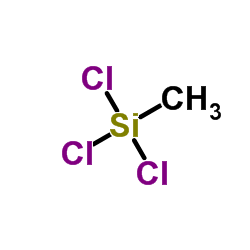 CAS#:75-79-6
CAS#:75-79-6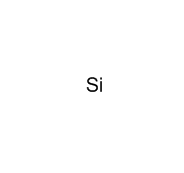 CAS#:7440-21-3
CAS#:7440-21-3 CAS#:1333-74-0
CAS#:1333-74-0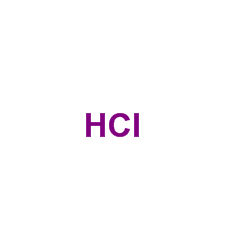 CAS#:7647-01-0
CAS#:7647-01-0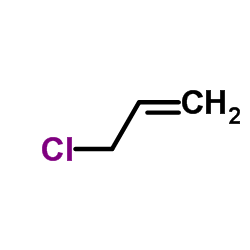 CAS#:107-05-1
CAS#:107-05-1 CAS#:75-54-7
CAS#:75-54-7 CAS#:115-10-6
CAS#:115-10-6 CAS#:1116-62-7
CAS#:1116-62-7 CAS#:111728-60-0
CAS#:111728-60-0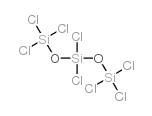 CAS#:31323-44-1
CAS#:31323-44-1 CAS#:78228-95-2
CAS#:78228-95-2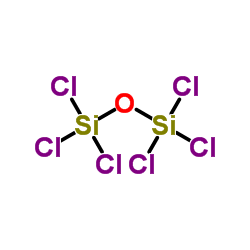 CAS#:14986-21-1
CAS#:14986-21-1 CAS#:56240-62-1
CAS#:56240-62-1 CAS#:7664-39-3
CAS#:7664-39-3 CAS#:18356-71-3
CAS#:18356-71-3
